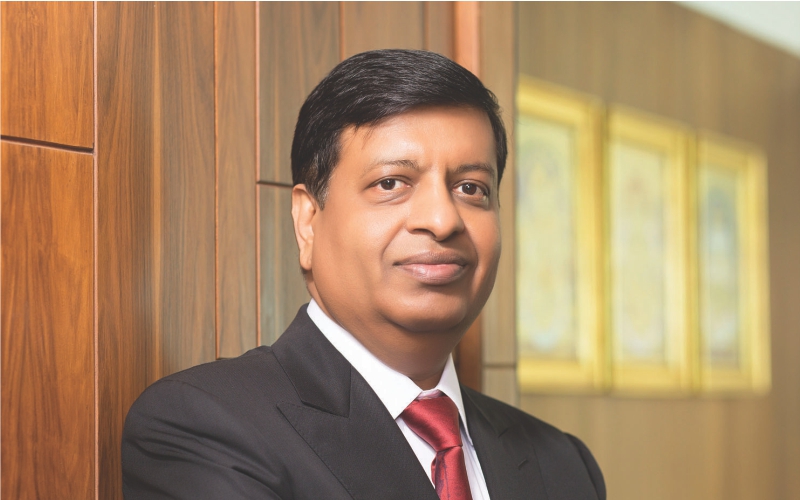Over the past 50 years, KEI Industries Ltd. has wisely invested in the right capabilities, comprehensively expanding its product range through continuous innovations. It has successfully reached out to new geographies while strengthening its presence in India. In a an exclusive interview given to Wire & Cable India, Mr. Anil Gupta, Chairman cum Managing Director, KEI Industries Limited, shares his views on industry trends, challenges for the industry, and the government’s policy for the industry.

Here are some excerpts from the interview.
Wire & Cable India: What are your thoughts on the Indian wire and cable industry? Is the sector evolving?
Anil Gupta: The wire and cable industry in India has been evolving very well because it is positively connected with the growth of the economy. The government intends to spend Rs 100 lakh crore on infrastructural development in the next five years. As you know, the wire and cable industry is directly connected with infrastructural development, which includes railways, metros, power, renewable energy, hospitals, government exhibition centers, public centers and national highways, are bound to push up the demand for wire and cable in India. The national highways in India are connected with a huge amount of electrical interface because various overhead utilities are usually shifted during highway construction and underground cabling is done to keep the electricity lines working.
The boom in the industrial sector also increases the demand for wires and cables. At the moment, investments are low because of the demand-supply gap. However, investment in the industry is ultimately driven by the private sector. As soon as the industry sees a surge in the demand, private sector companies immediately start investing.
In the last three years, huge investments have been made in infrastructural development. Upgradation of motor vehicle fuel to BS6 has prompted refineries to upgrade themselves with an investment of approximately Rs. 2 lakh crore. A huge investment has been made in petro-chemicals projects in India as well. The steel sector has also witnessed continuous investment in the last few years. If the government wants to add another 100 million tonnes in the next ten years, we can expect a lot of investment from the steel industry.
The real estate sector, comprising residential, commercial, hotels, hospitals and other infrastructural projects, also offers a big investment opportunity to the wire and cable industry. But the biggest investment opportunity comes from metros and railway electrification. Several kilometers of metro lines in Phase-4 of the Delhi Metro Project and 7 lines of the Mumbai Metro project are being laid down. Every big city in India will soon have a metro. Besides, various tenders have been floated for the high-speed bullet train, and the project offers a huge investment opportunity to the wire and cable industry. In addition, the development of new airports has also brought in another investment opportunity for the industry. Many existing airports have been upgraded, and new airports are being built. One of the major airport projects is the construction of the airport at Jewar, Uttar Pradesh. This place is close to Delhi. It is expected to stand as one of the biggest international airports of India.
Another major investment area is the renewable energy sector. Upgrade and revamp projects are being launched in old thermal power plants. Also, investments are heavier in the transmission and distribution sector, where we have to get power from different sites and strengthen the distribution system in cities through underground cable network. Not only that, smart city projects are also considered as sound electrical cabling investment across the country.
WCI: Can you tell us a little bit about the technology advancements taking place in the wire and cable industry in India?
AG: Technology advancement in the wire and cable industry is moving towards high voltage cables. More and more overhead lines are being converted into underground cabling from 11kV to 66kV in the distribution side and from 132kV to 400kV in the transmission side. Indian cities will witness huge growth in underground cables. Technology experts are focusing on how to enable the same cable to carry more electricity. It includes increasing the size of the conductors to increase the current carrying capacity and voltage grade of the cable.
The other advancement in technology revolves around smart metering, which may not be related to cables but is well connected to smart city and underground projects. Here the concern is to eliminate Aggregate Technical & Commercial (AT&C) losses, and it can be done through underground cabling and installation of smart meters.
WCI: What challenges do you think the industry would face in near future and how is the industry getting ready to face future challenges?
AG: The wire and cable industry would face major challenges when there is reduction in government expenditure and payments to the industry from the administration are made late. Moreover, delay in execution of projects due to Right of Way (ROW) issues causes difficulties for contractors in executing the transmission line projects on time. The major issues include reduced funding and untimely payments to contractors for the executed jobs.
When it comes to industry-specific challenges, the wire and cable sector faces the lack of availability of skilled manpower either on the production side or the design-engineering side. Another challenge is the scalability of the organization to deploy technologically advanced machines to ensure the entire production process meets the set standard in order to manufacture cables with service life of at least 40 to 50 years.
WCI: What is stopping the industry from expanding with regards to scalability?
AG: The companies in India are growing but with respect to the growth of the market. Also, a little more stringent qualifications should be implemented to select only reliable and quality-oriented cable companies to execute the cabling projects across the country.
WCI: What are your expectations from the government?
AG: As mentioned earlier, stringent qualifications and quality norms should be implemented by the government to select cable companies for any cabling projects. Also, the industry expects the government to honor their obligations under the contract and make swift payments. The contract should not be one-sided. It needs to be drafted keeping in mind the plight of the industry as well.
WCI: What is your message for technology suppliers? How can they scale up their technologies in order to provide the industry with quality machines and technology?
AG: Most of the wire and cable machines we normally use are still being imported from Europe and China. The Indian wire and cable machine manufacturers must acquire the skill and capability to design and produce world-class machines in order to make their local and global presence stronger.




